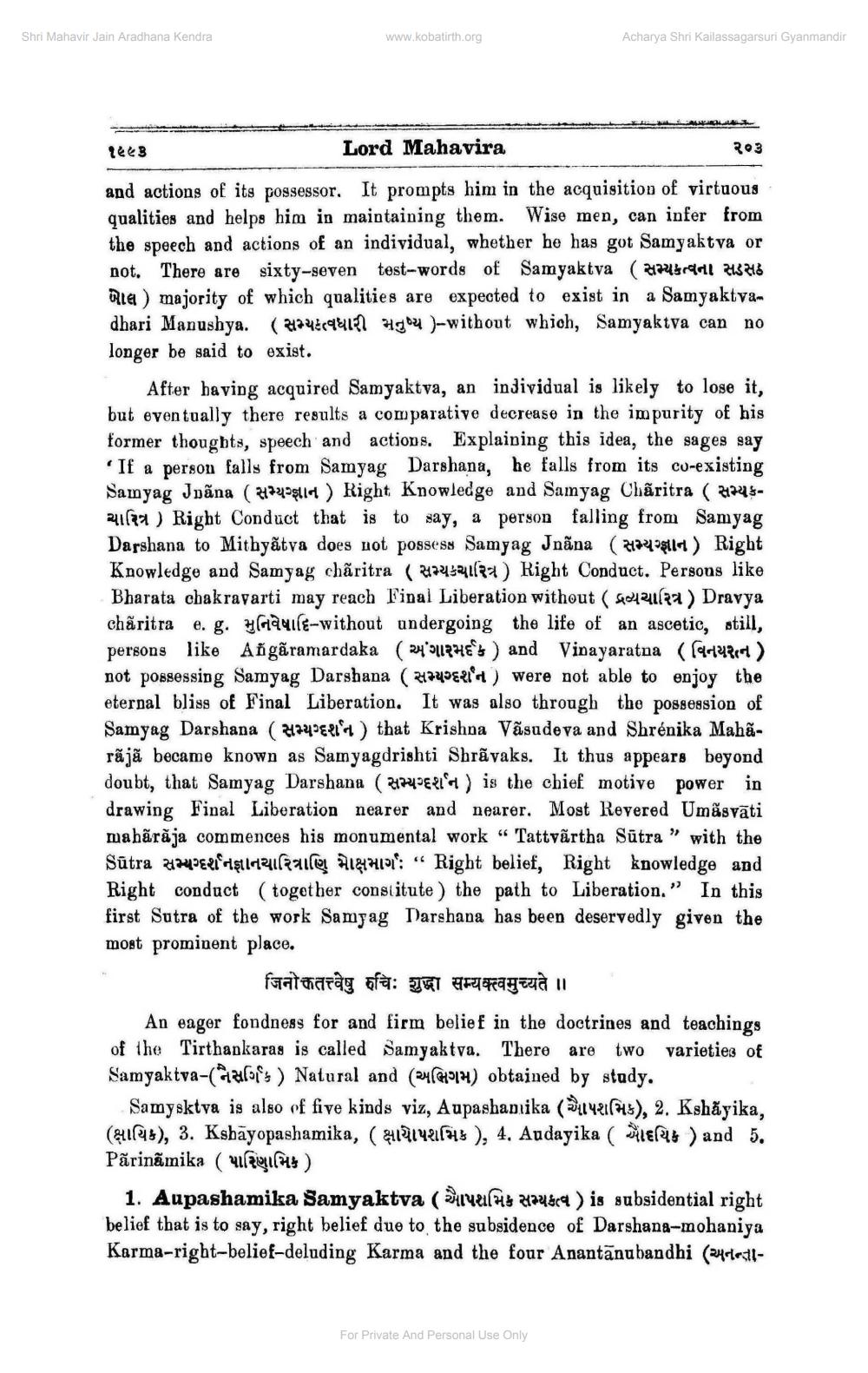________________
Shri Mahavir Jain Aradhana Kendra
www.kobatirth.org
૧૯૯૩
Lord Mahavira
and actions of its possessor. It prompts him in the acquisition of virtuous qualities and helps him in maintaining them. Wise men, can infer from the speech and actions of an individual, whether he has got Samyaktva or not. There are sixty-seven test-words of Samyaktva (
Acharya Shri Kailassagarsuri Gyanmandir
Rta) majority of which qualities are expected to exist in a Samyaktvadhari Manushya. ( )-without which, Samyaktva can longer be said to exist.
46
૨૦૩
After having acquired Samyaktva, an individual is likely to lose it, but eventually there results a comparative decrease in the impurity of his former thoughts, speech and actions. Explaining this idea, the sages say 'If a person falls from Samyag Darshana, he falls from its co-existing Samyag Juana (4) Right Knowledge and Samyag Charitra (4saula) Right Conduct that is to say, a person falling from Samyag Darshana to Mithyatva does not possess Samyag Jnana (4) Right Knowledge and Samyag charitra (a) Right Conduct. Persons like Bharata chakravarti may reach Final Liberation without (sauka) Dravya charitra e. g. ul-without undergoing the life of an ascetic, still, persons like Añgaramardaka (24) and Vinayaratna (a) not possessing Samyag Darshana (2) were not able to enjoy the eternal bliss of Final Liberation. It was also through the possession of Samyag Darshana (4) that Krishna Vasudeva and Shrenika Maharaja became known as Samyagdrishti Shravaks. It thus appears beyond doubt, that Samyag Darshana (2) is the chief motive power in drawing Final Liberation nearer and nearer. Most Revered Umasvati maharaja commences his monumental work "Tattvartha Sutra" with the Sútra સમ્યગ્દર્શનજ્ઞાનચારિત્રાણિ મેાક્ષમા Right belief, Right knowledge and Right conduct (together constitute) the path to Liberation." In this first Sutra of the work Samyag Darshana has been deservedly given the most prominent place.
no
जिनोकतत्त्वेषु रुचिः शुद्धा सम्यक्त्वमुच्यते ॥
An eager fondness for and firm belief in the doctrines and teachings of the Tirthankaras is called Samyaktva. There are two varieties of Samyaktva-(s) Natural and (2) obtained by study.
For Private And Personal Use Only
Samysktva is also of five kinds viz, Aupashamika (as), 2. Kshayika, (a), 3. Kshayopashamika, (atas), 4. Audayika (ef) and 5. Părinğmika ( પાણિામિક )
1. Aupashamika Samyaktva (Salus rasa) is subsidential right belief that is to say, right belief due to the subsidence of Darshana-mohaniya Karma-right-belief-deluding Karma and the four Anantānubandhi (e||




